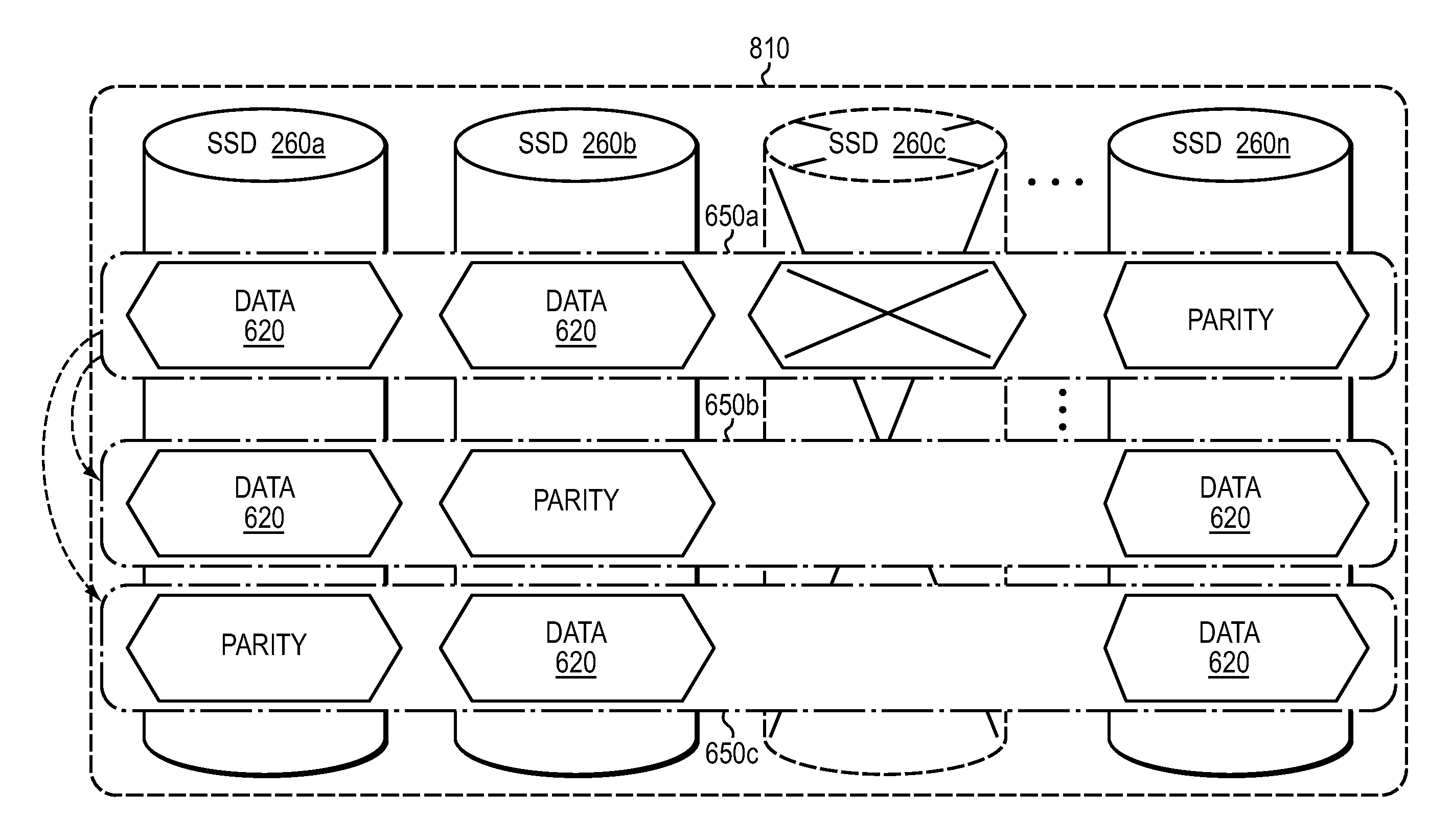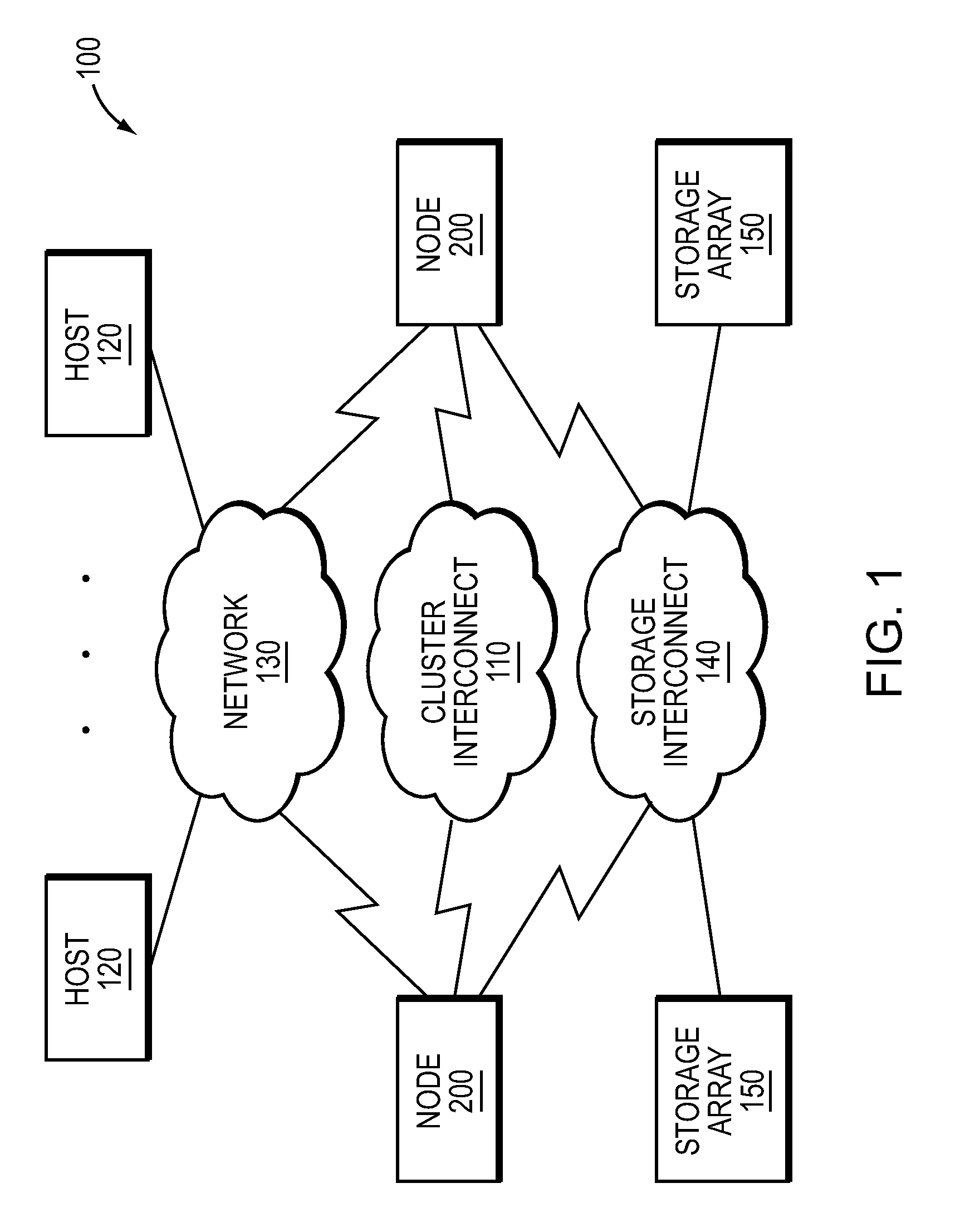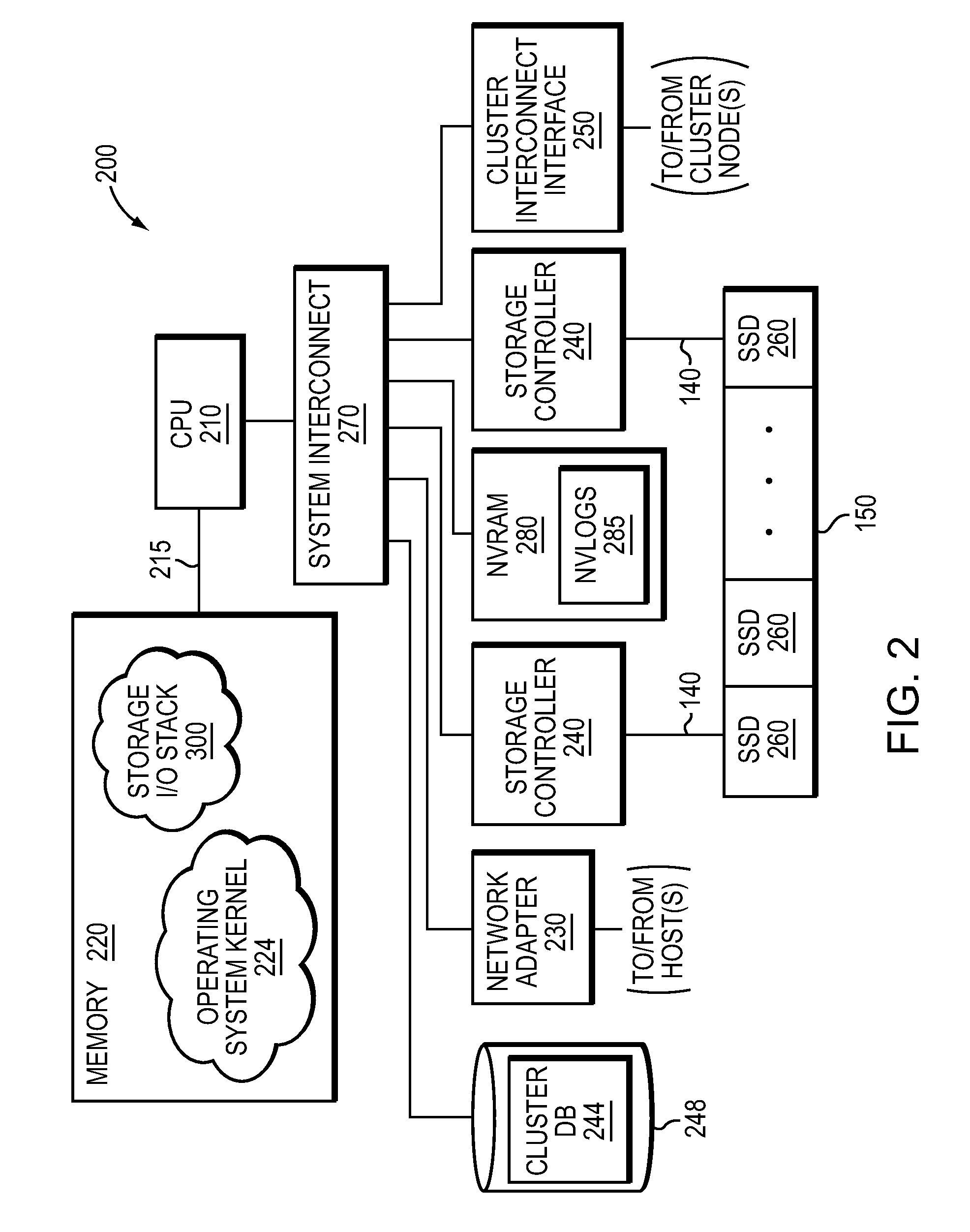File system driven raid rebuild technique
a file system and raid rebuilding technology, applied in the field of storage systems, can solve problems such as difficult to achieve good raid stripe efficiency, raise raid implementation problems, and substantial write amplification in the system
- Summary
- Abstract
- Description
- Claims
- Application Information
AI Technical Summary
Benefits of technology
Problems solved by technology
Method used
Image
Examples
Embodiment Construction
[0022]The embodiments described herein are directed to a file system driven RAID rebuild technique. A layered file system may organize storage of data as segments spanning one or more sets of storage devices, such as solid state drives (SSDs), of a storage array, wherein each set of SSDs may form a RAID group configured to provide data redundancy for a segment. The file system may then drive (i.e., initiate) rebuild of a RAID configuration of the SSDs on a segment-by-segment basis in response to cleaning of the segment (i.e., segment cleaning). That is, rebuild of the RAID configuration occurs in response to the file system operation of segment cleaning, rather than as an independent operation. Each segment may include one or more RAID stripes that provide a level of data redundancy (e.g., single parity RAID 5 or double parity RAID 6) as well as RAID organization (i.e., distribution of data and parity) for the segment. Notably, the level of data redundancy and RAID organization may ...
PUM
 Login to View More
Login to View More Abstract
Description
Claims
Application Information
 Login to View More
Login to View More - R&D
- Intellectual Property
- Life Sciences
- Materials
- Tech Scout
- Unparalleled Data Quality
- Higher Quality Content
- 60% Fewer Hallucinations
Browse by: Latest US Patents, China's latest patents, Technical Efficacy Thesaurus, Application Domain, Technology Topic, Popular Technical Reports.
© 2025 PatSnap. All rights reserved.Legal|Privacy policy|Modern Slavery Act Transparency Statement|Sitemap|About US| Contact US: help@patsnap.com



